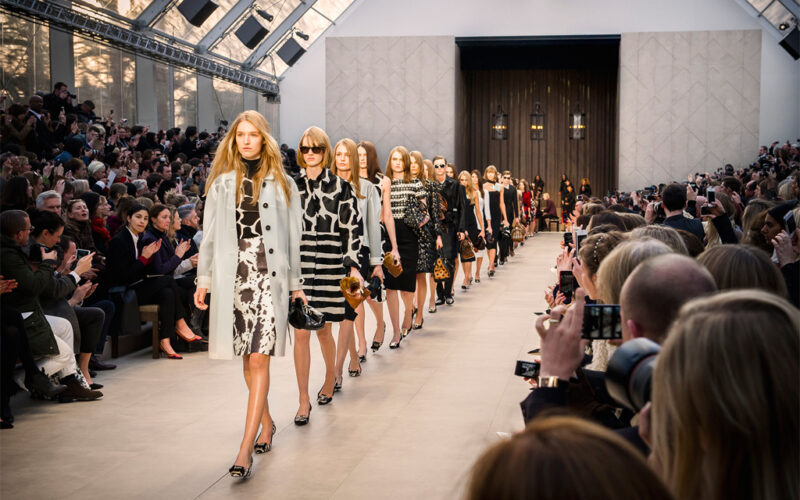As London grows more expensive, the fashion industry is being forced to adapt faster and leaner than ever before. In this blog post, we take a look at the rising costs of living in London and how this might be impacting creativity during this year’s London Fashion Week. From trend-setting fashion shows to makerspaces that drive innovation and sustainability, find out how designers are responding to the economic challenges of this vibrant city. It’s an inspiring look at how people are finding new ways to express themselves through fashion — even in times of hardship.
Introduction: Highlighting the Increasing Cost of Living in London and It’s Impact on the Fashion Scene
Since the beginning of the 21st century, the cost of living in London has been on the rise. This is due to a number of factors, including inflation, the rising cost of housing and utilities, and the growing popularity of the city as a tourist destination. As a result of these changes, Londoners are spending more money on essentials like food and rent, and less on discretionary items like clothing.
The impact of this change is evident in the London fashion scene. Long-established department stores like Selfridges and Harvey Nichols have seen their sales decline in recent years, while newer, more affordable brands like Topshop and Primark have become increasingly popular. In addition, many young designers are choosing to present their collections at smaller, independent fashion weeks instead of at London Fashion Week itself.
While some may see this as a sign that the creative energy of London’s fashion scene is on the decline, others believe that it is simply evidence of a shift towards more affordable and accessible fashion. Whatever the case may be, it is clear that the changing economic landscape of London is having an impact on its fashion scene.
London Fashion Week: A Closer Look at the Event
London Fashion Week is one of the biggest events in the fashion industry calendar, and this year it’s been hit by the cost of living crisis, with many designers and retailers struggling to keep up with rising costs.
The event itself costs millions of pounds to stage, and that’s before you take into account the costs of travel and accommodation for all the attendees. But despite the challenges, London Fashion Week is still a hugely important event for the city’s creative industries.
So what exactly goes on at London Fashion Week? Here’s a closer look at the event:
There are four main venues for London Fashion Week: The BFC show space at The Strand, Topshop Oxford Circus, Victoria House Basement and Soho Revue Bar.
Each venue has a different feel and serves a different purpose. The BFC show space is where all the major catwalk shows take place, while Topshop Oxford Circus is more focused on presentations and smaller scale runway shows. Victoria House Basement is home to many of the exhibitors and brand pop-ups, while Soho Revue Bar is where after-parties and social events take place.
Over the course of five days, there are around 100 catwalk shows and presentations taking place at London Fashion Week. That might sound like a lot, but it’s actually a relatively small number compared to other fashion weeks around the world.
However, what London Fashion Week lacks in quantity, it more than
Examining How Creativity Is Influenced by Rising Prices
The rising cost of living in London is having a significant impact on the city’s fashion scene. Many designers are finding it increasingly difficult to afford to live and work in the capital, and as a result, many are choosing to leave London altogether.
The high cost of rent is one of the biggest problems for designers. With average rents in London now exceeding £1,000 per month, many designers are forced to live outside of the city or share houses with other creatives. This can make it difficult to find time to work on new collections or meet with clients.
The high cost of materials is also making it difficult for designers to create new collections. The price of wool, for example, has increased by nearly 20% in the past year alone. This makes it difficult for designers to experiment with new fabrics and materials, as they simply cannot afford to use them.
As a result of these rising costs, many designers are finding it difficult to be creative. With less money available to invest in new collections, and fewer opportunities to experiment with new materials, many designers feel that they are being forced out of London by the rising cost of living.
Exploring How Designers Adapt (Materials, Ideas, Etc.) To Negotiate The Situation
As London Fashion Week comes to a close, we take a look at how the cost of living crisis is forcing designers to be more creative with their materials, ideas, and designs. For many designers, the high cost of living in London is making it difficult to continue their work and forcing them to adapt their designs to negotiate the situation.
One designer who has had to adapt her designs is local Central Saint Martins graduate Laura Jane Atkins. Atkins says that the current situation has made it hard for her to find work and that she’s had to rely on family and friends for support. “I’ve been looking for internships and work placements since I graduated but it’s been really tough,” she explains. “I’m currently working on freelance projects but it’s not stable enough to live off.” To make ends meet, Laura has started making and selling jewelry inspired by her fashion designs using cheaper materials such as pewter and Swarovski crystals instead of diamonds.
Another designer who has had to get creative is Josephine Fairley, co-founder of British beauty brand The Beauty Bounty. Fairley notes that the current climate has forced her company to be “more scrappy and innovative” when it comes to their product development process. One example of this is their recent launch of a solid perfume which was inspired by the fact that liquid perfumes are heavy and expensive to ship. Thissolid perfume functions as both a perfume and a piece of jewelry, negating the need for
Looking at Innovative Solutions That Address The Issue
As the cost of living in London continues to rise, many fashion designers are finding it increasingly difficult to maintain their creative talents while also trying to make a living. This has led to some innovative solutions that address the issue, such as using more sustainable materials, working with local manufacturers, and selling direct-to-consumer.
One sustainable solution that has been gaining popularity is using recycled materials. This not only help to reduce waste, but can also be cost-effective. Local manufacturing is another option that can help keep costs down while still supporting local businesses. And finally, selling direct-to-consumer allows designers to bypass the traditional wholesale model and sell their products at a more reasonable price point.
Each of these solutions has its own unique benefits and drawbacks, but all offer a way for fashion designers to continue to create beautiful garments despite the rising cost of living in London.
ALSO READ: H&M Takes The Lead In Textile Recycling With Their Latest Launch
Conclusion: Analysing What Steps Could Be Taken to Mitigate These Challenges
In conclusion, analysing what steps could be taken to mitigate the challenges faced by London Fashion Week would require an understanding of the root causes of these problems. The cost of living crisis is imposing serious financial constraints on many people in London, which is likely to have a knock-on effect on the city’s creative industries. We need to find ways to support and grow London’s creative sector in order to maintain its international reputation as a fashion capital.







